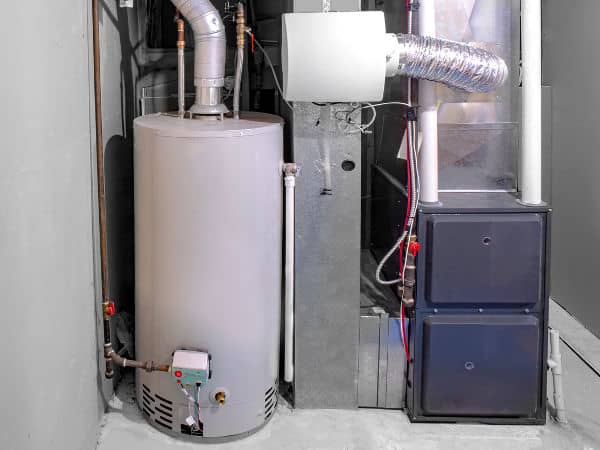Top Methods to Care for Your Home's Hot Water System Successfully
Top Methods to Care for Your Home's Hot Water System Successfully
Blog Article
The content underneath relating to Tips For Maintaining Your Hot Water Heater is amazingly insightful. Read it for your own benefit and figure out what you think about it.

Warm water is crucial for daily convenience, whether it's for a revitalizing shower or cleaning recipes. To ensure your warm water system runs successfully and lasts much longer, regular maintenance is vital. This short article gives useful tips and insights on exactly how to keep your home's hot water system to prevent disruptions and costly repairs.
Intro
Preserving your home's warm water system could appear daunting, but with a couple of basic steps, you can ensure it operates efficiently for years ahead. This guide covers every little thing from understanding your hot water system to do it yourself upkeep pointers and knowing when to employ specialist help.
Significance of Preserving Your Warm Water System
Routine upkeep not just prolongs the lifespan of your warm water system yet also ensures it operates successfully. Disregarding upkeep can bring about lowered performance, greater power bills, and even early failing of the system.
Indicators Your Hot Water System Requirements Maintenance
Knowing when your hot water system requires interest can stop significant problems. Look out for signs such as irregular water temperature, weird noises from the heating system, or rustic water.
Purging the Water Heater
Purging your water heater gets rid of sediment accumulation, improving effectiveness and lengthening its life.
Checking and Changing Anode Rods
Anode rods avoid deterioration inside the tank. Checking and changing them when broken is important.
Facility Problems Calling For Expert Assistance
Examples include significant leakages, electrical issues, or if your water heater is constantly underperforming.
Routine Professional Maintenance Perks
Professional maintenance can include extensive assessments, tune-ups, and making sure compliance with safety and security criteria.
Checking and Readjusting Temperature Settings
Readjusting the temperature level settings ensures ideal efficiency and security.
DIY Tips for Upkeep
You can execute several upkeep jobs yourself to keep your hot water system in leading condition.
Looking for Leakages
Routinely evaluate pipes and connections for leaks, as these can cause water damages and greater costs.
Recognizing Your Warm Water System
Prior to diving right into upkeep tasks, it's practical to comprehend the fundamental components of your warm water system. Commonly, this consists of the hot water heater itself, pipelines, anode poles, and temperature controls.
Monthly Upkeep Tasks
Regular monthly checks can assist capture minor concerns before they rise.
Testing Stress Relief Valves
Checking the pressure safety valve guarantees it works appropriately and avoids too much pressure accumulation.
Insulating Pipelines
Insulating hot water pipes lowers heat loss and can save energy.
When to Call a Specialist
While do it yourself upkeep is helpful, some issues require specialist competence.
Verdict
Normal maintenance of your home's hot water system is crucial for performance, long life, and expense financial savings. By following these pointers and recognizing when to seek expert help, you can make sure a reliable supply of hot water without unforeseen disruptions.
How to Maintain an Instant Hot Water Heater
Before tinkering with your hot water heater, make sure that it’s not powered on. You also have to turn off the main circuit breaker and shut off the main gas line to prevent accidents. Also turn off the water valves connected to your unit to prevent water from flowing into and out of the appliance. 2. When you’re done, you have to detach the purge valves’ caps. These look like the letter “T†and are situated on either side of the water valves. Doing so will release any pressure that has accumulated inside the valves while at the same time avoid hot water from shooting out and burning your skin. 3. When the purge valves’ caps are removed, you have to connect your hosing lines to the valves. Your unit should have come with three hoses but if it didn’t, you can purchase these things from any hardware or home repair shops. You can also get them from retail stores that sell water heating systems. Read the user’s manual and follow it to complete this task properly. When the hosing lines are connected, open the purge port’s valves. 4. You should never use harsh chemical cleaners or solutions when cleaning your unit. Make use of white vinegar instead. It should be undiluted and you’ll probably use about 2 gallons. 5. Now flush your water heater. This task should probably take about 40 minutes. We can’t give you specific directions for this because the procedure is carried out depending on the type, model and brand of your heater. With that being said, refer to the user’s manual. 6. When you’re done draining the unit, you have to turn off the purge port valves again. Remove the hosing lines that you earlier installed on each of the water valves. Put the valve caps (purge port) back in their respective places and be very careful so as not to damage the rubber discs that are found inside these caps. 7. Now that everything’s back in place, check your user’s manual again to find out how to reactivate your water heating system. 8. Once it is working, turn one of your hot water faucets on just to let air pass through the heater’s water supply pipes. Leave the tap on until water flows smoothly out of it. https://www.orrplumbing.com/blog/2014/september/how-to-maintain-an-instant-hot-water-heater/

As a fervent person who reads about How to Maintain a Hot Water Heater in a Few Simple Steps, I imagined sharing that piece of content was a good thing. Sharing is nice. Helping people is fun. I take joy in reading our article about Tips on Maintaining a Water Heater.
Check It Out Report this page